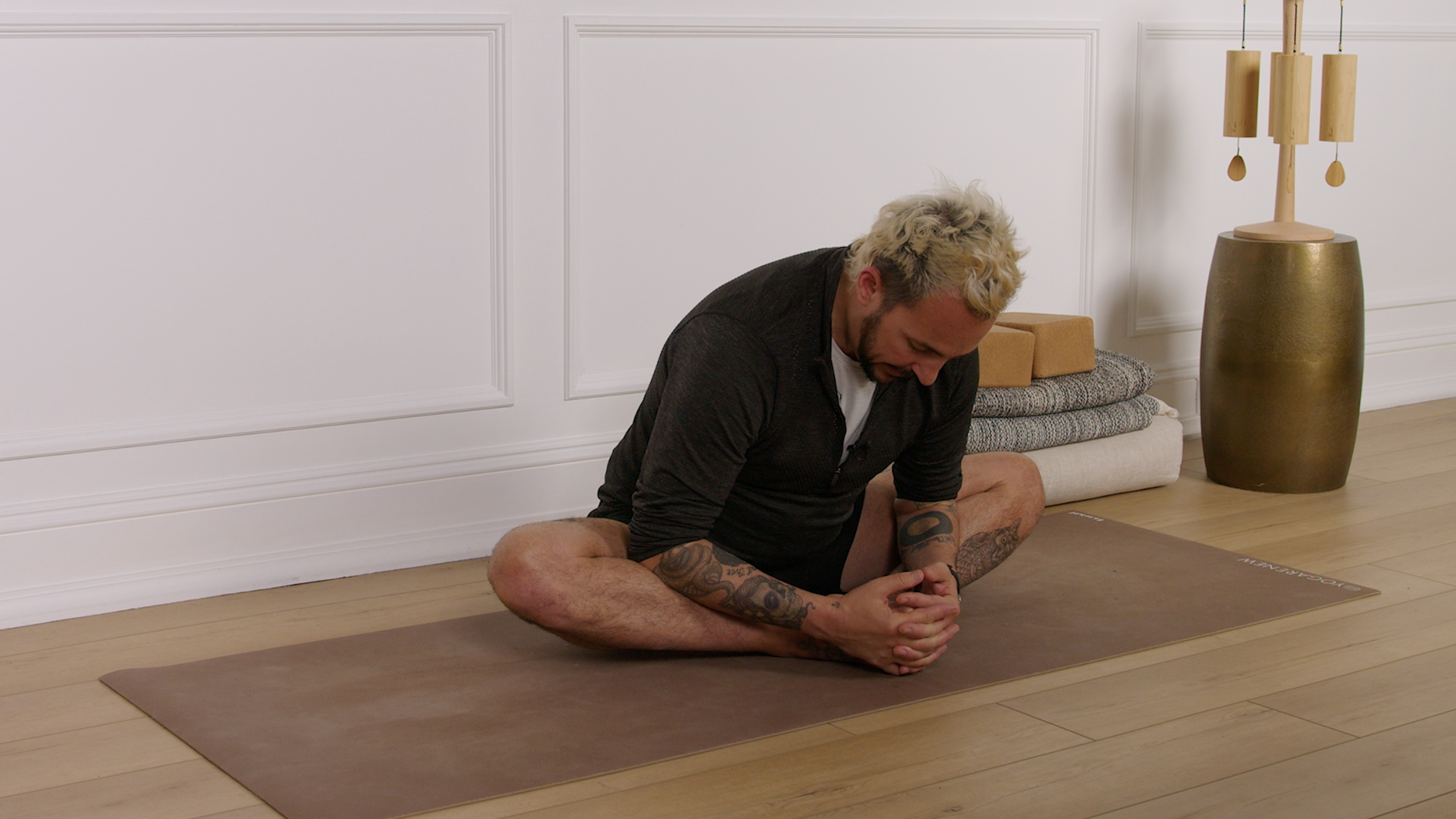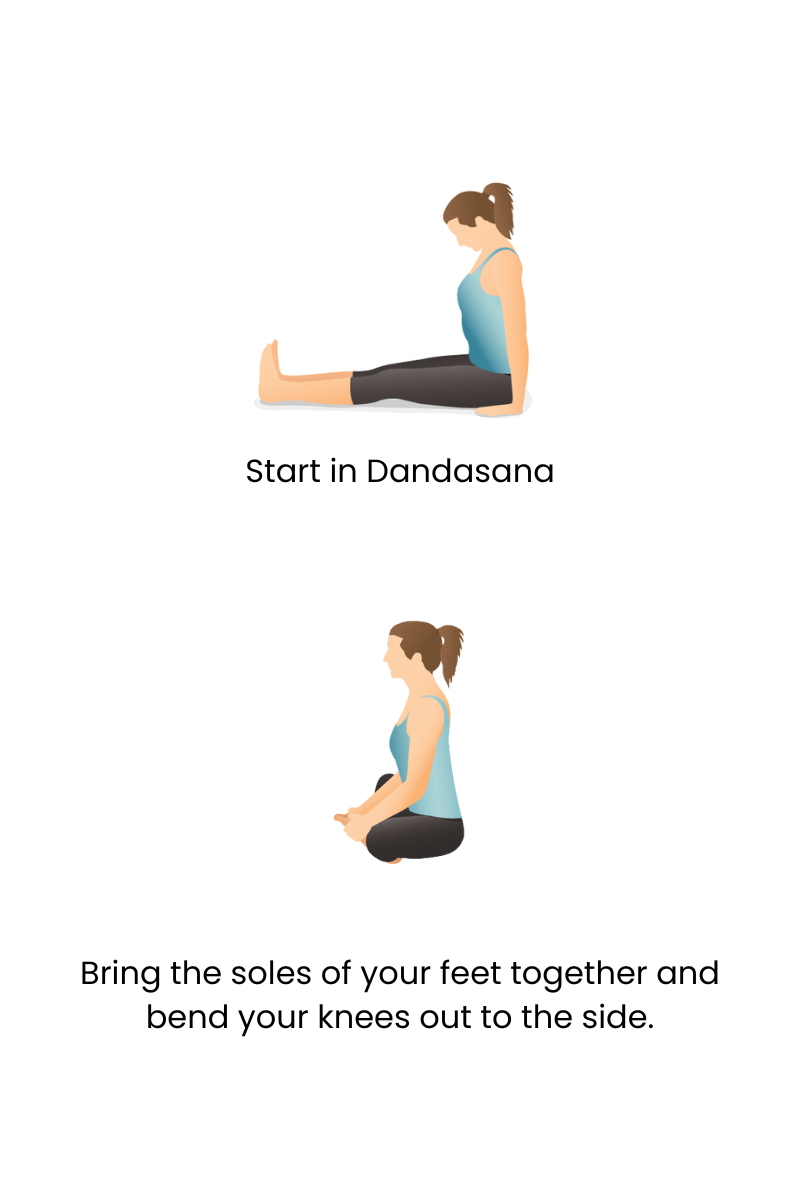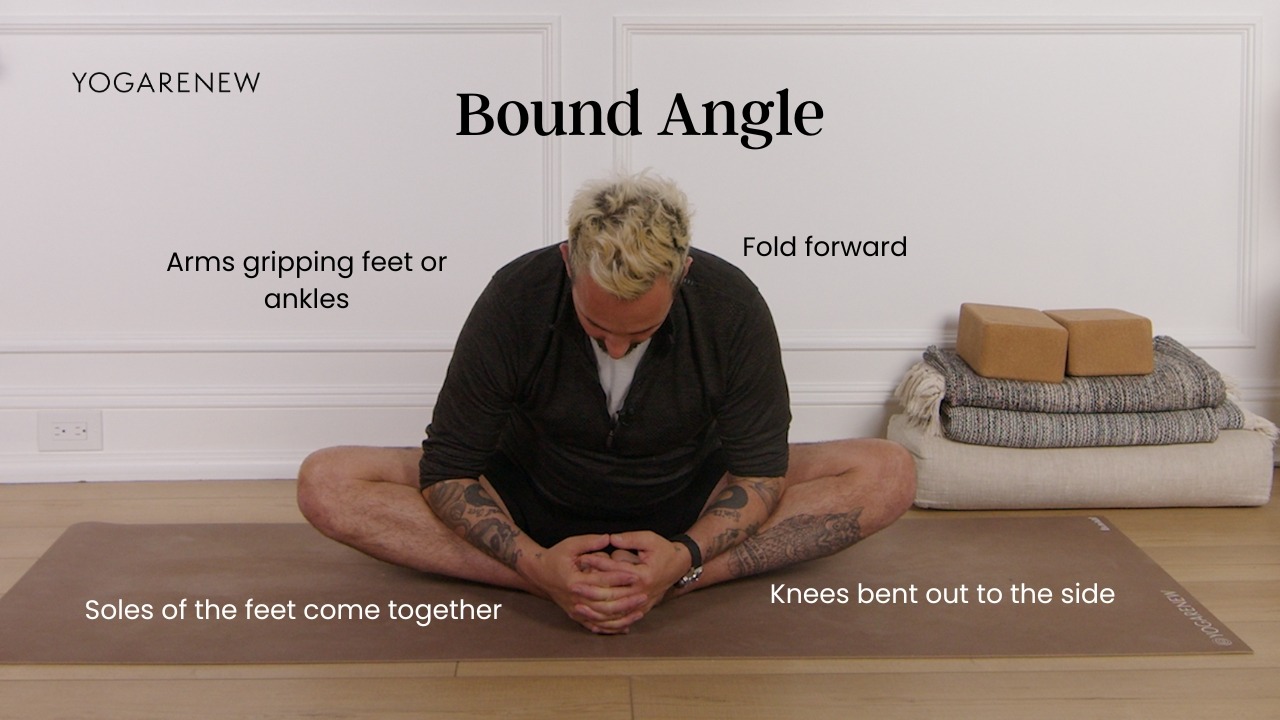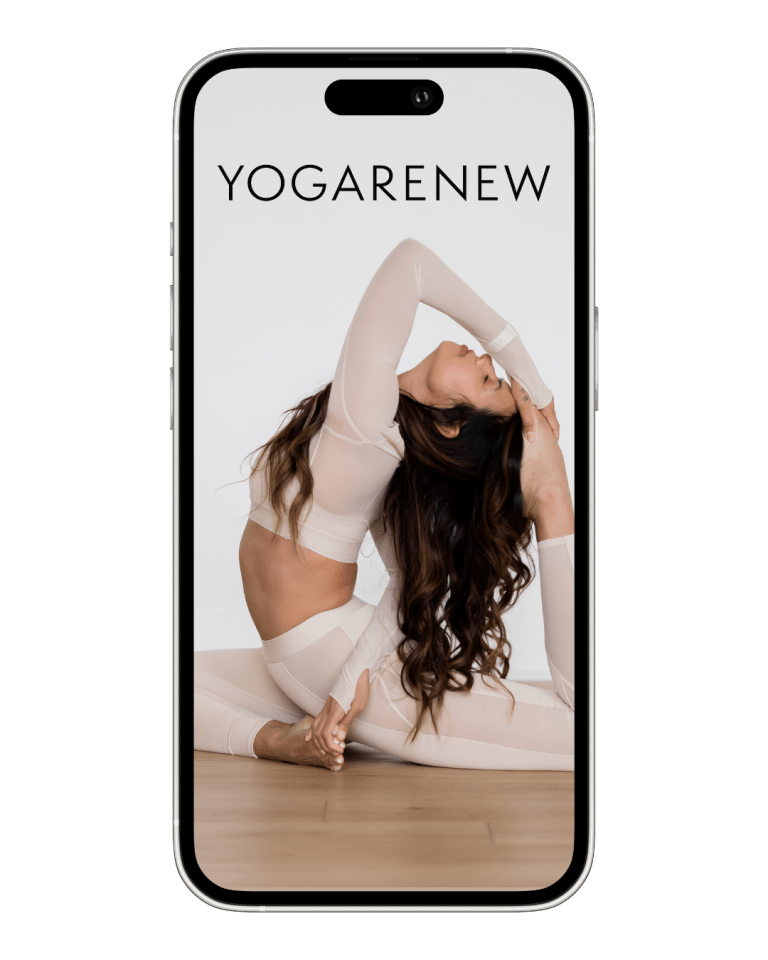What is Bound Angle Pose?
English Name: Bound Angle Pose
Sanskrit Name: Baddha Konasana (pronounced BAH-dah cone-AHS-uh-nuh)
Category: Seated Pose, Hip Opener, Beginner-Friendly, Restorative

English Name: Bound Angle Pose
Sanskrit Name: Baddha Konasana (pronounced BAH-dah cone-AHS-uh-nuh)
Category: Seated Pose, Hip Opener, Beginner-Friendly, Restorative
Bound Angle Pose, known in Sanskrit as Baddha Konasana, is a gentle seated posture that opens the hips and inner thighs while promoting relaxation and introspection. Often used in warm-ups, cool-downs, or restorative sequences, it encourages groundedness, breath awareness, and ease. Despite its simple appearance, this pose can offer profound physical and emotional benefits when practiced mindfully.
By bringing the soles of the feet together and letting the knees fall open, Bound Angle Pose invites a softening through the hips while lengthening the spine. Whether held in stillness or used in a gentle flow, it is accessible for all levels and can be easily modified for comfort and support.


1. Hip or Groin Injury: Modify with props or avoid deep stretches
2. Knee Pain or Sensitivity: Support knees with blocks or blankets
3. Lower Back Issues: Sit on a folded blanket or bolster to maintain spinal alignment
4. Recent Pelvic or Abdominal Surgery: Consult a healthcare provider before practicing
5. Pregnancy (Late Stages): May require extra support or alternative poses
Bound Angle Pose provides a grounding, nurturing experience that promotes both flexibility and inner calm. It helps release tightness in the hips and groin, supports digestive health, and creates space for introspection. Especially valuable for those who sit long hours or feel emotionally overstimulated, Baddha Konasana invites you to slow down, breathe deeply, and connect with your body’s natural rhythm.
Yes! It’s one of the most accessible and beneficial seated postures, especially with props.
No problem—use yoga blocks, bolsters, or blankets under each knee for support.
Absolutely, with modifications. A bolstered reclined version is especially helpful in prenatal yoga.

Explore classes & pose tutorials for any style, format, duration or experience level with a free account in the YogaRenew app. Or subscribe and gain access to workshops, live classes and more.